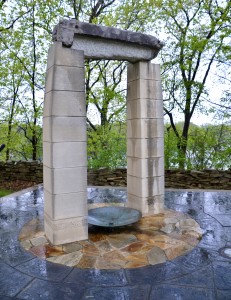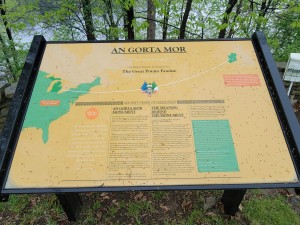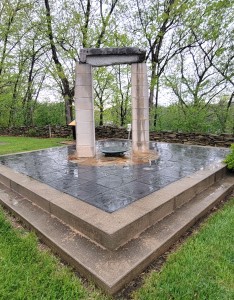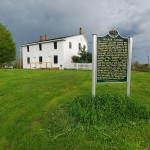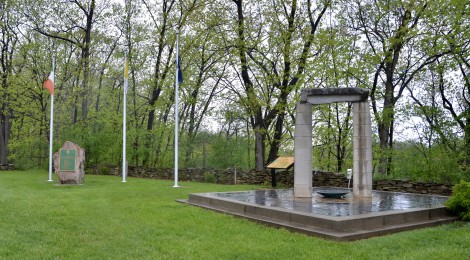
Michigan Roadside Attractions: “An Gorta Mor” Potato Famine Memorial in Michigan’s Irish Hills
Michigan Roadside Attractions is a periodic feature on Travel the Mitten that will explore the many interesting things that can be found on the highways, byways and back roads of Michigan, ranging from the interesting to the unusual.
Many of us remember learning about the Irish Potato Famine (also known as the Great Famine; 1845-1852) in school. Not everyone learned about a Michigan connection to this tragedy – many Irish immigrants came to the United States during the famine, and some of them settled in our state. While visiting Michigan’s Irish Hills region last summer we discovered a monument to those who lost their life in the famine as well as those who immigrated here from Ireland. “An Gorta Mor,” Michigan’s Potato Famine Memorial, can be found in Brooklyn on the grounds of the Saint Joseph Church and Shrine.
Michigan’s Irish Hills was “first named by the Irish immigrants who settled in the green, rolling hills after escaping the Potato Famine of 1846. The area was predominately farms and orchards until the 1920s when it became a popular tourist destination.” Roadside attractions like the Walker Tavern, Irish Hills Towers, Mystery Hill, Stagecoach Stop, and Prehistoric Forest used to draw thousands of visitors every year but in recent decades the focus has shifted towards outdoor recreation.
An Gorta Mor translates to “the Great Hunger” in Irish, and this Michigan monument is described in further detail on a plaque near the sculpture: “With the loss of its potato crop for five successive years, Ireland’s rural population was driven to near extinction. One million died, while two million emigrated to save themselves from a similar fate, most of those emigrants came to America. When the Irish arrived in Michigan, what they saw was the answer to their prayers rich with lakes and streams, surrounded by fertile fields perfect for farming and abounding with wildlife. Many came to this area known as the Irish Hills, reminiscent of the Ireland they left behind. The main focus of the Great Hunger Memorial is the post-Lintel structure constructed from two limestone columns that support a lintel. The lintel, actually one of several steps that formed Penrose Quay In Cork Harbor (Ireland), is suspended over a large empty bronze bowl that symbolizes the great. hunger.’ The sculpture is immediately surrounded by cobbles from Donegal (Ireland) and encompassing the cobbles is a circle or path’ of slate that Represent the journey made from Ireland to America. The hardscape turns from a circle to a square that is bordered by pavers that bear the names of the thirty-two counties of Ireland in English and Gaelic. Beneath each paver is reliquary containing a stone from that county. The four corners bear the names of the four provinces.” The plaque also bears the names of sponsors that made its construction possible and notes that it was a project sponsored by the St. Patrick Division of the Ancient Order of Hibernians.
This sculpture was done by Kenneth M. Thompson of Blissfield and was dedicated in 2004. The interpretive panels would be added later and they do a great job of telling the story of this disaster while also explaining its relevance to Michigan. If you have an interest in history, enjoy finding unique Michigan roadside attractions, or are already here to check out the St. Joseph Church and Shrine then Michigan’s An Gorta Mor Memorial is worth a stop.

